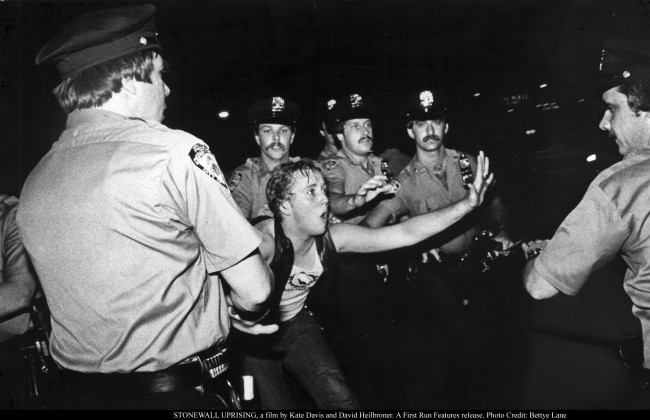Stonewall Uprising
Not About the Civil War General

By Robert Patrick
There has never been a question that the solidification of gay rights has been an uphill battle. The skewed laws of America have been, without a doubt, a repository for the unjust repression of what should be basic moral principles. None of this, of course, is necessarily surprising, especially in the gelatinous paranoia of mid-century America. But “Stonewall Uprising,” a monolithic documentary by the directing team of Kate Davis and David Heilbroner, details the beginning of a movement that, with the help of the unbridled tenacity of Greenwich Village in the late 1960s, provided a beacon for the public unity of homosexuals in a volatile climate.
The greatest achievement of the documentary isn’t its standard documentary template, complete with the typical camera panning of photographs and puttering of archival footage, but instead the people it interviews. The uprising – or the inappropriately dubbed “riots” – were pivotal to igniting confidence of many gay men and lesbian women to join together, in public, despite the bullish attitudes of close-minded individuals. Providing the importance of the event, it’s not a stretch to imagine that it wasn’t very difficult to cull inspired expositions from participants of the happening at The Stonewall Inn, where the homosexual community joined forces against police brutality.
Where many documentaries, no matter their subject, scoop up talking heads that rattle on like wind-up teeth, “Stonewall Uprising” manages to pick select participants of this historical event who are so impassioned that every line they speak sparks with energy. There are no dead stares or monotone confessions. Not once was there an inclusion of a bow-tie adorned author or a detached historian. No, only the trembling voices of an enraged and proud ensemble of individuals who experienced the event were centered in the camera.
The sad thing about the glossy, Stepford Wife looking 1950s is that its marketed as a cradle of innocence. Even now, some sixty-years later, people see that specific decade as nothing more than a two-toned greeting card, a winsome effigy of the family who eats thirty-seven stacked pancakes every morning while making the most morally sound decisions – and do you really want life advice from someone who makes thirty-seven pancakes for their child? And yes, we laugh at those educational videos (what a loose term that is) where the father, or the more ominous voiceover guy, detests sex and warns the youth that it will turn you into a legless gila monster if you engage in lewd acts. The sputtering reels are funny, but some of the other ones, less likely to be shown in jest, are completely depressing to watch. “Stonewall Uprising” dusts off educational videos that present homosexuals as detestable creatures, incapable of love, whose primary goal is sins of the flesh and fangled debauchery. “Every one in three children will turn queer,” one alleged juvenile protection officer says. “it’s a contagious disease.” No, the 1950s and 1960s weren’t the good ole’ days – unless you consider lobotomies and the practice of castration to people of different sexual preferences to be whimsical.
And though bigotry and malevolence toward the homosexual community has always existed, to imagine a time where you could barely walk on the streets without being called a psychopath for your lifestyle is unfathomable. The participants of the “first run,” or what would soon be known as “the gay pride march,” are historical heroes. To see them interviewed, and in tears, is likely to be as emotional as it gets in theaters this year.
There is no flashy editing or booming rock score to ferry along the documentary, and for that reason is why the documentary works so hard, so well, so sincere. Make no mistakes – this is one of the best docs of the year so far.
4/5
